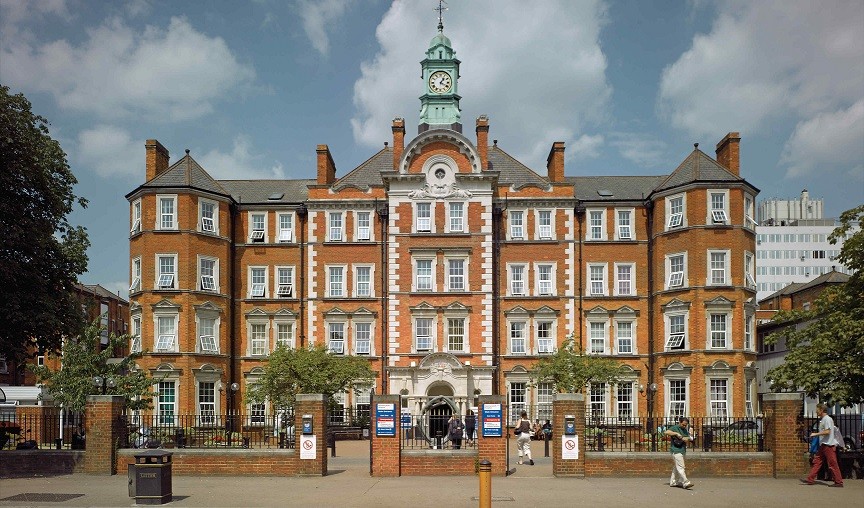Top 15 Richest Americans of All Time
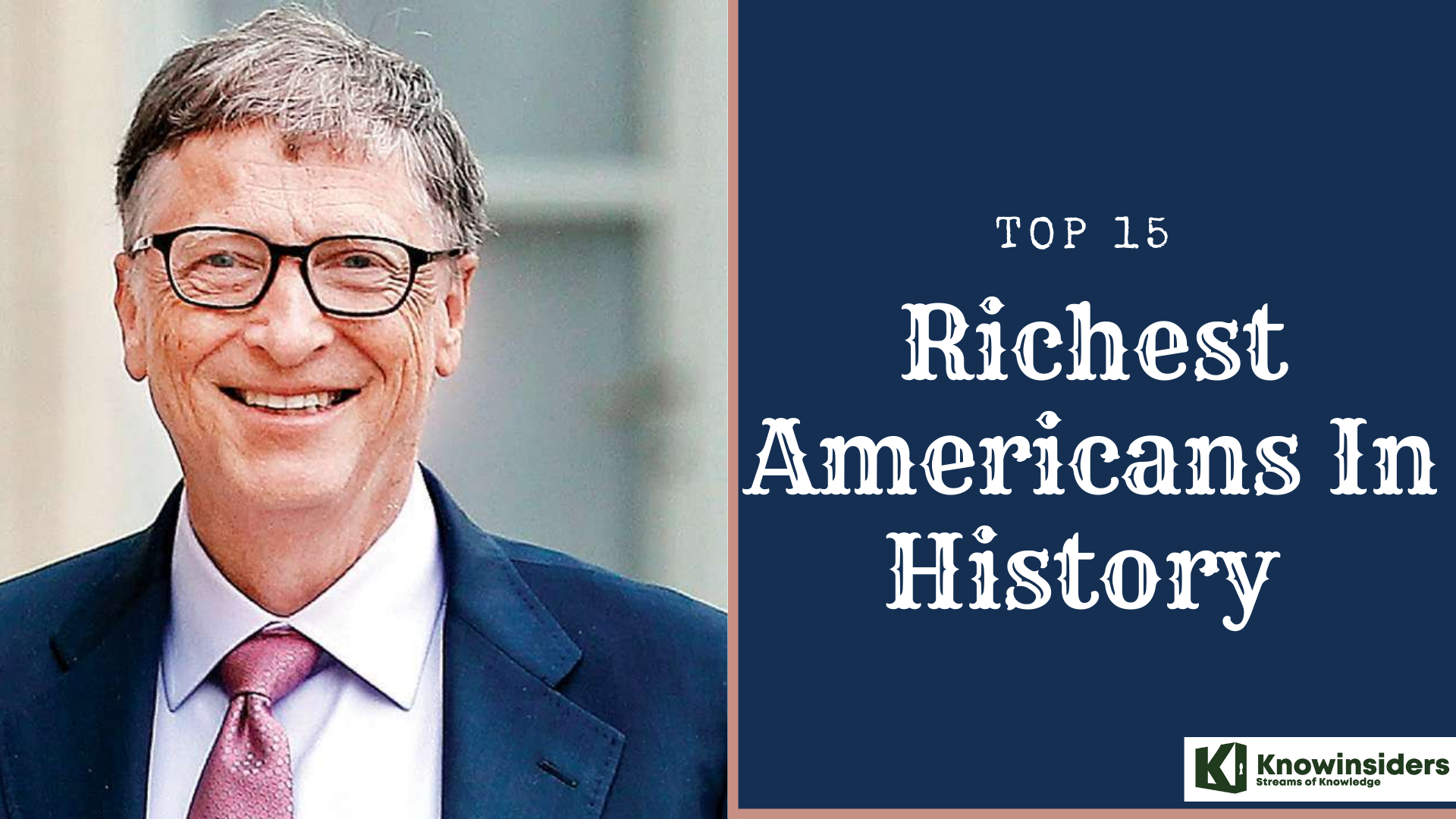 |
| Top 15 Richest Americans of All Time |
The richest Americans in history come primarily from several eras of extreme inequality.
One group of robber barons, like John D. Rockefeller and Andrew Carnegie, lived between the Gilded Age and the Roaring Twenties.
Then there are the tech mavens and investors who made a fortune in the past twenty years.
We identified peak net worth for historical figures based on scholarly estimates. All figures are adjusted for inflation.
List of top 15 richest Americans of all time
15. Larry Ellison (1944-present)
14. Warren Buffett (1930-present)
13. Alexander Turney Stewart (1803-1876)
12. Stephen Van Rensselaer (1764-1839)
11. Andrew Carnegie (1835-1919)
10. Richard Mellon (1858-1933)
9. Mark Zuckerberg (1984-present)
8. Bill Gates (1955-present)
7. Stephen Girard (1750-1831)
6. John Jacob Astor (1763-1848)
5. Elon Musk (1971-present)
4. Sam Walton (1918-1992)
3. Jeff Bezos (1964-present)
2. Cornelius Vanderbilt (1794-1877)
1. John D. Rockefeller (1839-1937)
Who are the top 15 richest Americans of all time
15. Larry Ellison
2021 estimated net worth: $98.4 billion
Larry Ellison, in full Lawrence Joseph Ellison, (born August 17, 1944, New York City, New York, U.S.), American businessman and entrepreneur who was cofounder and chief executive officer (1977–2014) of the software company Oracle Corporation.
His mother, Florence Spellman, was a 19-year-old single parent. After he had a bout of pneumonia at the age of nine months, she sent him to Chicago to live with her aunt and uncle, Lillian and Louis Ellison, who adopted the child. He attended the University of Illinois in Urbana-Champaign from 1962 but dropped out in 1964 shortly after Lillian’s death; he had been very close to his adoptive mother but had a much more difficult relationship with Louis, who often told him that he would never amount to anything. Larry then briefly attended the University of Chicago in 1966.
He went to California and spent the next several years as a computer programmer for various companies. Beginning in 1973, he worked at the electronics company Ampex, where he met fellow programmer Ed Oates and was supervised by Bob Miner. Ellison left Ampex in 1976 and later joined Precision Instruments (later Omex), where he was vice president of research and development.
14. Warren Buffett
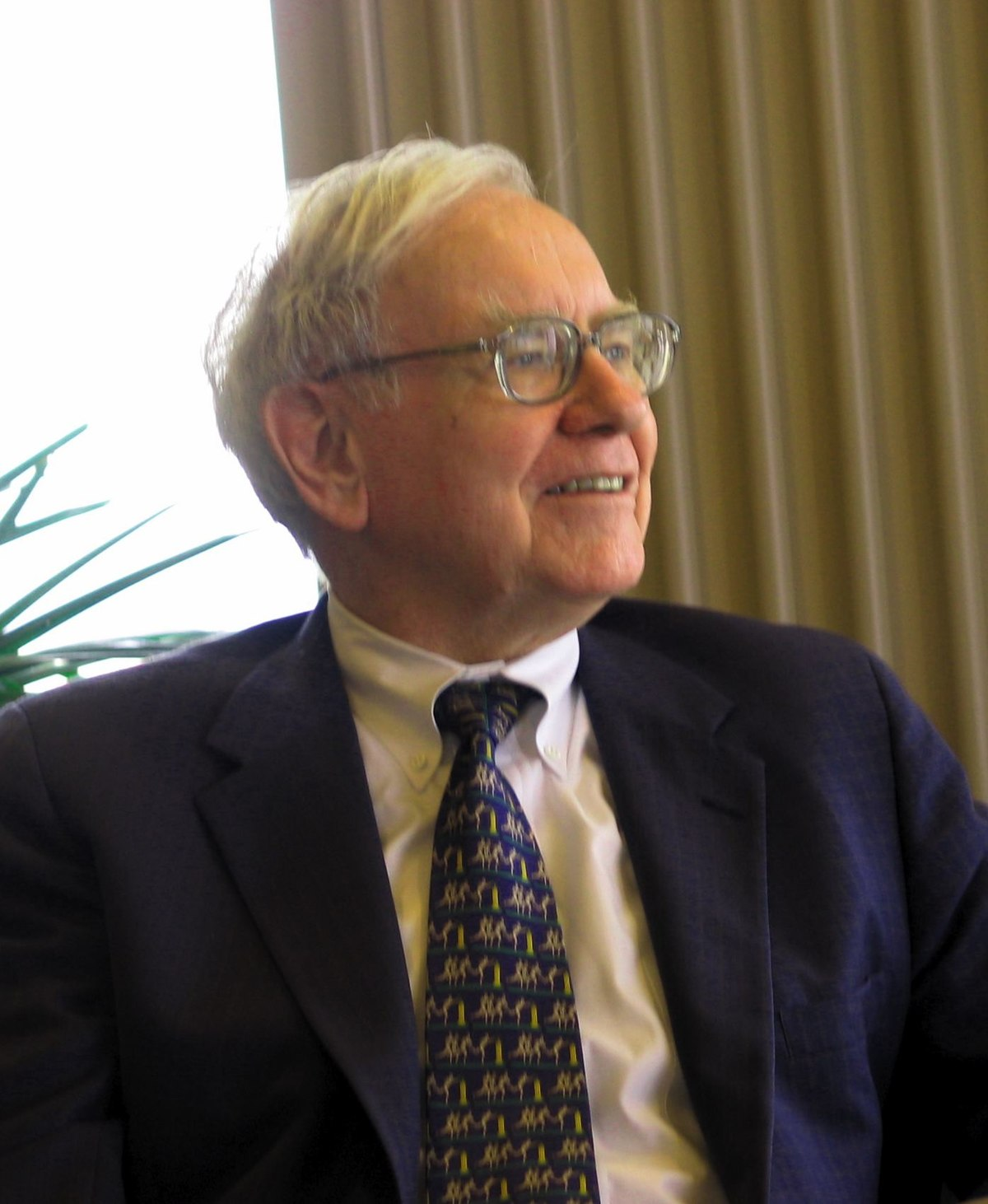 |
| Photo: Wikipedia |
2021 estimated net worth: $99.8 billion
Known as the "Oracle of Omaha," Warren Buffett is an investment guru and one of the richest and most respected businessmen in the world.
Warren Buffett demonstrated keen business abilities at a young age. He formed Buffett Partnership Ltd. in 1956, and by 1965 he had assumed control of Berkshire Hathaway. Overseeing the growth of a conglomerate with holdings in the media, insurance, energy and food and beverage industries, Buffett became one of the world's richest men and a celebrated philanthropist.
On January 30, 2018, Berkshire Hathaway, JPMorgan Chase and Amazon delivered a joint press release in which they announced plans to team up and form a new healthcare company for their U.S. employees.
According to the release, the company would be "free from profit-making incentives and constraints" as it tried to find ways to cut costs and improve the overall process for patients, with an initial focus on technology solutions.
Calling the swelling costs of healthcare a "hungry tapeworm on the American economy," Buffett said, "We share the belief that putting our collective resources behind the country’s best talent can, in time, check the rise in health costs while concurrently enhancing patient satisfaction and outcomes."
In March outlets reported that Berkshire Hathaway's HomeServices of America Inc., the second-largest residential brokerage owner in the U.S., was set to take more steps toward the top spot, held by Realogy's NRT LLC. Buffett said he "barely noticed" when Berkshire Hathaway originally acquired HomeServices, then part of MidAmerican Energy Holdings Co., back in 2000.
Buffett returned to the news in spring 2020 with the announcement that Berkshire Hathaway had dumped its holdings in the "big four" airlines — Southwest, American, Delta and United — over concerns that the industry would never fully recover from the coronavirus pandemic.
13. Alexander Turney Stewart
 |
| Photo: Getty Images |
2021 estimated net worth: $107.8 billion
Alexander Turney Stewart was a highly successful 19th century Irish-American entrepreneur, a leading retail dry-goods businessman in the USA. Born in Ireland, he moved to the USA as a young man. Considered to be a business genius, he started his business with department stores. He later established his own manufacturing facilities and also started a mail order business. He owned hotels in New York City and constructed the planned community of Garden City, Long Island. He was engaged with various types of charitable works also. For instance, he sent food to Ireland during the mid-century famine in that country. His innovative outlook towards merchandise business had a positive effect on American retail business. He introduced the idea of vertical integration in business by becoming his own wholesaler and manufacturer and maintained his own European manufacturing units. He built a large marble-fronted store on Broadway between Chambers Street and Reade Street in New York City; it was the largest retail store in the world at that time. Stewart’s residential building in America was one of the finest private homes. He also had the largest collection of valuable art. Stewart’s business grew exponentially and he died as one of the richest men in the USA. Before his death, he owned two large stores whose combined sales was worth $203 million.
12. Stephen Van Rensselaer
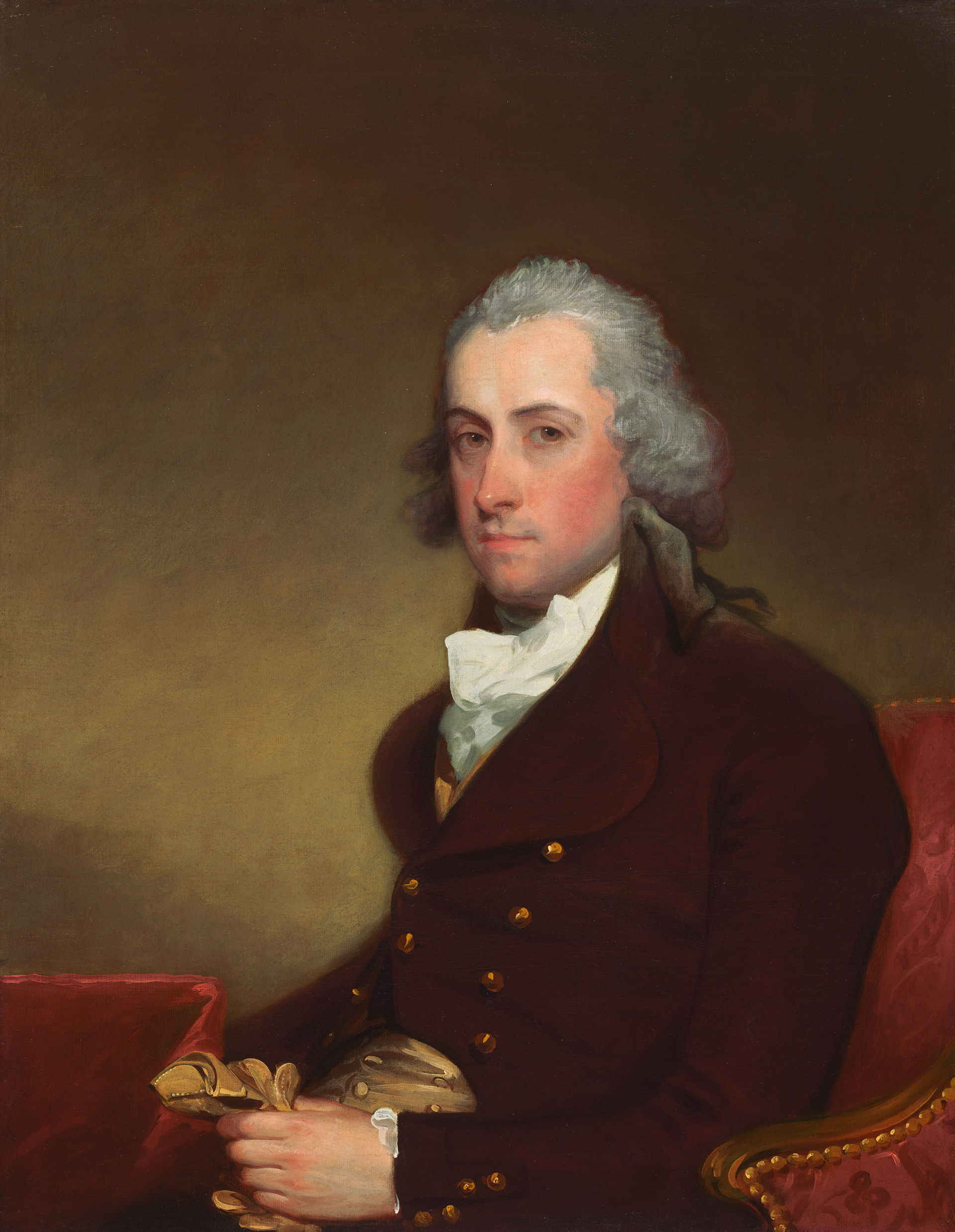 |
| Photo: Wikipedia |
2021 estimated net worth: $108.9 billion
Stephen Van Rensselaer III was an American landowner, businessman, militia officer, and politician. A graduate of Harvard College, at age 21, Van Rensselaer took control of Rensselaerswyck, his family's manor. He developed the land by encouraging tenants to settle it and granting them perpetual leases at moderate rates, which enabled the tenants to use more of their capital to make their farms and businesses productive.
Active in politics as a Federalist, Van Rensselaer served in the New York State Assembly and New York State Senate, and as Lieutenant Governor of New York. After the demise of the Federalist Party, Van Rensselaer was a John Quincy Adams supporter and served in the United States House of Representatives for one partial term and three full ones. Van Rensselaer was a supporter of higher education; he served on the board of trustees for several schools and colleges and was the founder of the Rensselaer Polytechnic Institute. He was also a civic activist and philanthropist and was a founder of Albany's public library and the city's Institute of History & Arts.
Long active in the militia, Van Rensselaer attained the rank of major general; he commanded troops on the New York-Canada border during the War of 1812, but resigned his commission after defeat at the Battle of Queenston Heights. After Van Rensselaer's 1839 death, efforts by his sons to collect past due lease payments led to the Anti-Rent War, and the break up and sale of the manor. As the heir to and then owner of one of the largest estates in New York, Van Rensselaer's holdings made him the tenth richest American of all time, based on the ratio of his fortune to contemporary GDP.
11. Andrew Carnegie
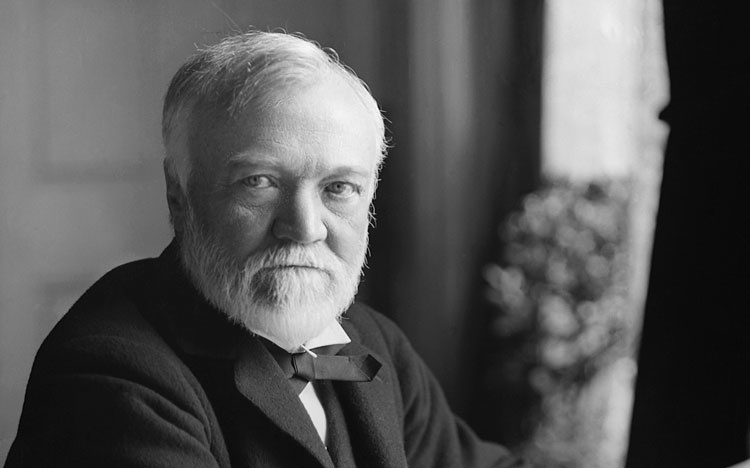 |
| Photo: Getty Images |
2021 estimated net worth: $108.9 billion
Andrew Carnegie, (born November 25, 1835, Dunfermline, Fife, Scotland—died August 11, 1919, Lenox, Massachusetts, U.S.), Scottish-born American industrialist who led the enormous expansion of the American steel industry in the late 19th century. He was also one of the most important philanthropists of his era.
Carnegie’s father, William Carnegie, a handloom weaver, was a Chartist and marcher for workingman’s causes; his maternal grandfather, Thomas Morrision, also an agitator, had been a friend of William Cobbett. During the young Carnegie’s childhood the arrival of the power loom in Dunfermline and a general economic downturn impoverished his father, inducing the Carnegies to immigrate in 1848 to the United States, where they joined a Scottish colony of relatives and friends in Allegheny, Pennsylvania (now part of Pittsburgh). Young Andrew began work at age 12 as a bobbin boy in a cotton factory. He quickly became enthusiastically Americanized, educating himself by reading and writing and attending night school.
At age 14 Carnegie became a messenger in a telegraph office, where he eventually caught the notice of Thomas Scott, a superintendent of the Pennsylvania Railroad Company, who made Carnegie his private secretary and personal telegrapher in 1853. Carnegie’s subsequent rise was rapid, and in 1859 he succeeded Scott as superintendent of the railroad’s Pittsburgh division. While in this post he invested in the Woodruff Sleeping Car Company (the original holder of the Pullman patents) and introduced the first successful sleeping car on American railroads. He had meanwhile begun making shrewd investments in such industrial concerns as the Keystone Bridge Company, the Superior Rail Mill and Blast Furnaces, the Union Iron Mills, and the Pittsburgh Locomotive Works. He also profitably invested in a Pennsylvania oilfield, and he took several trips to Europe, selling railroad securities. By the age of 30 he had an annual income of $50,000.
10. Richard Mellon
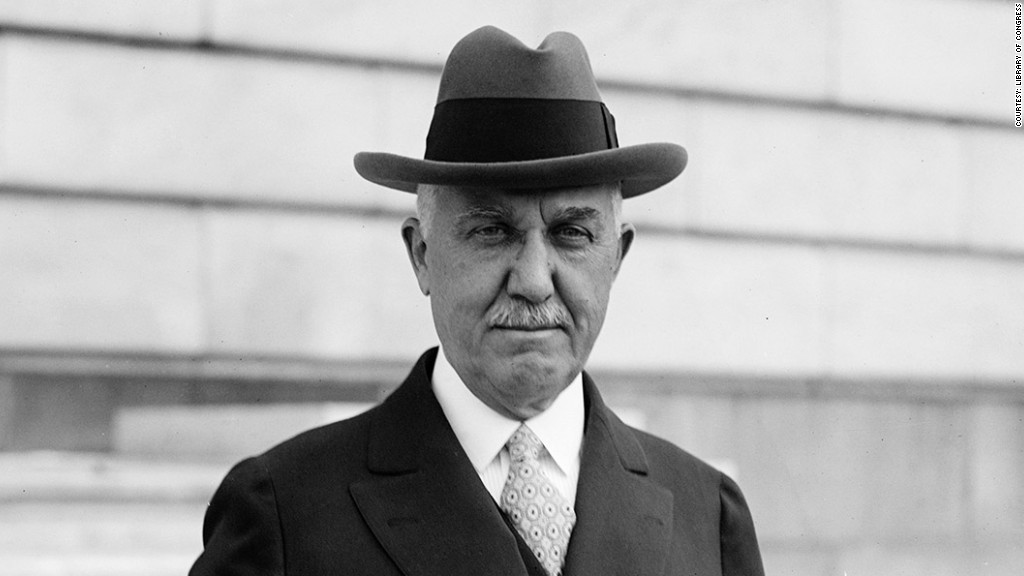 |
| Photo: Getty Images |
2021 estimated net worth: $111.0 billion
Richard Beatty Mellon (March 19, 1858 – December 1, 1933), sometimes R.B., was a banker, industrialist, and philanthropist from Pittsburgh, Pennsylvania.
He and his brother Andrew Mellon, sons of Judge Thomas Mellon, were frequent business partners. Richard served under Andrew at Mellon Bank, and assumed its presidency in 1921 when Andrew was appointed Treasury Secretary. They also made joint philanthropic gifts, notably several large donations to their alma mater, the University of Pittsburgh, including creation of the Mellon Institute of Industrial Research to honor their father, which is now a part of Carnegie Mellon University.
R.B. served from 1899–1910 as president of the Pittsburgh Reduction Company, renamed the Aluminum Company of America (Alcoa) in 1907, and was heavily invested in the Pittsburgh Coal Company, today part of CONSOL Energy, where he clashed with John L. Lewis and the United Mine Workers. Later, he was instrumental in forming Mellbank Corporation, a bank holding company, which helped the affiliated banks weather the Great Depression.
In 1918, R.B. Mellon organized the Citizens' Committee on City Plan, which sought to improve Pittsburgh through better urban planning and zoning. In honor of his civic efforts, the Air and Waste Management Association recognizes individuals who have made administrative, legislative, and judicial contributions to the field of pollution abatement with the Richard Beatty Mellon Award.
In 1931, R.B. Mellon along with C.C. Macdonald assumed control of Idlewild Park in Ligonier, Pennsylvania. He was the founder of the Rolling Rock Club.
Mellon's philanthropic gifts were primarily church-oriented. In 1926 he established a $15 million pension fund for Presbyterian ministers. He and his wife Jennie Taylor King were the major donors to the Cathedral of Hope, the new home for the East Liberty Presbyterian Church, which they and their parents had attended. He died on December 1, 1933, before the new building was completed. The $13.3 million in taxes paid on his estate enabled the state to meet its payroll.
9. Mark Zuckerberg
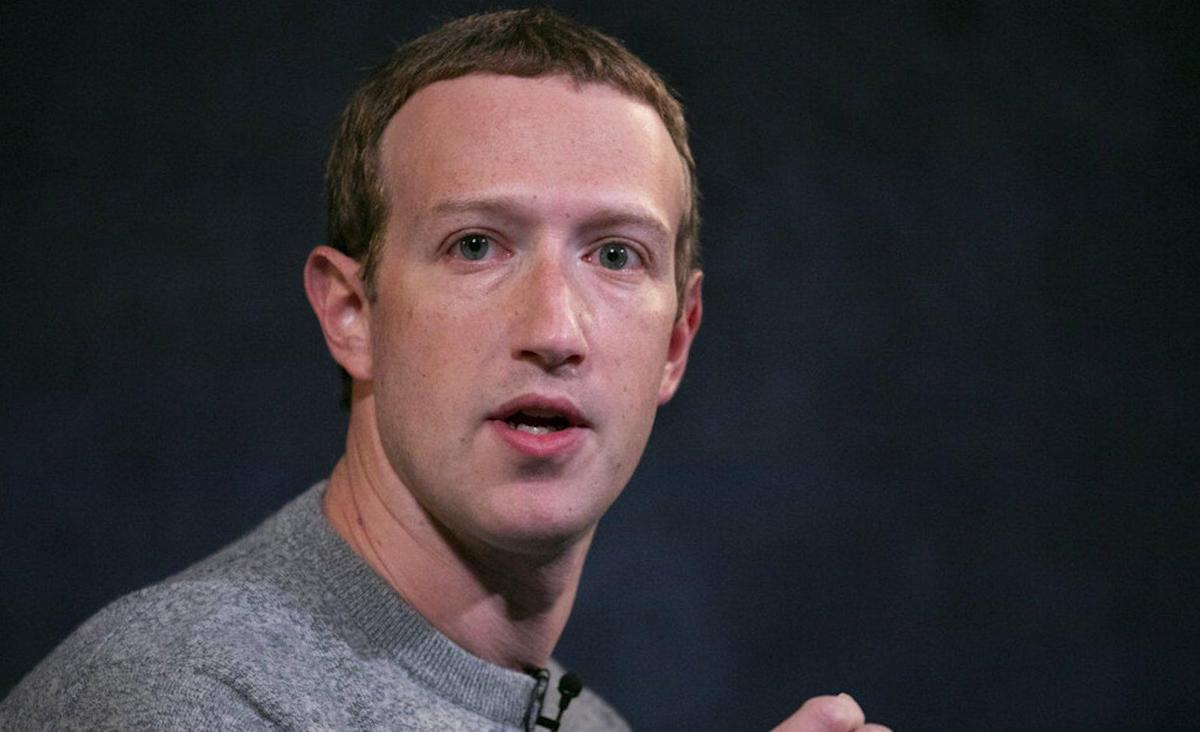 |
| Photo: Getty Images |
Mark Zuckerberg, in full Mark Elliot Zuckerberg, (born May 14, 1984, White Plains, New York, U.S.), American computer programmer who was cofounder and CEO (2004– ) of Facebook, a social networking Web site.
After attending Phillips Exeter Academy, Zuckerberg enrolled at Harvard University in 2002. On February 4, 2004, he launched thefacebook.com (renamed Facebook in 2005), a directory in which fellow Harvard students entered their own information and photos into a template that he had devised. Within two weeks half of the student body had signed up. Zuckerberg’s roommates, Dustin Moskovitz and Chris Hughes, helped him add features and make the site available to other campuses across the country. Facebook quickly became popular as registered users could create profiles, upload photos and other media, and keep in touch with friends. It differed from other social networking sites, however, in its emphasis on real names (and e-mail addresses), or “trusted connections.” It also laid particular emphasis on networking, with information disseminated not only to each individual’s network of friends but also to friends of friends—what Zuckerberg called the “social graph.”
In the summer of 2004 the trio moved their headquarters to Palo Alto, California, where Zuckerberg talked venture capitalist Peter Thiel into giving them seed money. Zuckerberg dropped out of Harvard to concentrate on the fledgling company, of which he became CEO and president. In May 2005 Facebook received its first major infusion of venture capital ($12.7 million). Four months later Facebook opened to registration by high-school students. Meanwhile, foreign colleges and universities also began to sign up, and by September 2006 anyone with an e-mail address could join a regional network based on where he or she lived. About that time Zuckerberg turned down a $1 billion buyout offer from Yahoo!, but in 2007 Facebook struck a deal with Microsoft in which the software company paid $240 million for a 1.6 percent stake in Facebook; two years later Digital Sky Technologies purchased a 1.96 percent share for $200 million. In 2008 Zuckerberg’s new worth was estimated at about $1.5 billion. After Facebook’s initial public offering (IPO) of stock in 2012, Zuckerberg’s net worth was estimated at more than $19 billion.
8. Bill Gates
 |
| Photo: Getty Images |
Bill Gates, in full William Henry Gates III, (born October 28, 1955, Seattle, Washington, U.S.), American computer programmer and entrepreneur who cofounded Microsoft Corporation, the world’s largest personal-computer software company.
Gates wrote his first software program at the age of 13. In high school he helped form a group of programmers who computerized their school’s payroll system and founded Traf-O-Data, a company that sold traffic-counting systems to local governments. In 1975 Gates, then a sophomore at Harvard University, joined his hometown friend Paul G. Allen to develop software for the first microcomputers. They began by adapting BASIC, a popular programming language used on large computers, for use on microcomputers. With the success of this project, Gates left Harvard during his junior year and, with Allen, formed Microsoft. Gates’s sway over the infant microcomputer industry greatly increased when Microsoft licensed an operating system called MS-DOS to International Business Machines Corporation—then the world’s biggest computer supplier and industry pacesetter—for use on its first microcomputer, the IBM PC (personal computer). After the machine’s release in 1981, IBM quickly set the technical standard for the PC industry, and MS-DOS likewise pushed out competing operating systems. While Microsoft’s independence strained relations with IBM, Gates deftly manipulated the larger company so that it became permanently dependent on him for crucial software. Makers of IBM-compatible PCs, or clones, also turned to Microsoft for their basic software. By the start of the 1990s he had become the PC industry’s ultimate kingmaker.
Largely on the strength of Microsoft’s success, Gates amassed a huge paper fortune as the company’s largest individual shareholder. He became a paper billionaire in 1986, and within a decade his net worth had reached into the tens of billions of dollars—making him by some estimates the world’s richest private individual. With few interests beyond software and the potential of information technology, Gates at first preferred to stay out of the public eye, handling civic and philanthropic affairs indirectly through one of his foundations. Nevertheless, as Microsoft’s power and reputation grew, and especially as it attracted the attention of the U.S. Justice Department’s antitrust division, Gates, with some reluctance, became a more public figure. Rivals (particularly in competing companies in Silicon Valley) portrayed him as driven, duplicitous, and determined to profit from virtually every electronic transaction in the world. His supporters, on the other hand, celebrated his uncanny business acumen, his flexibility, and his boundless appetite for finding new ways to make computers and electronics more useful through software.
7. Stephen Girard
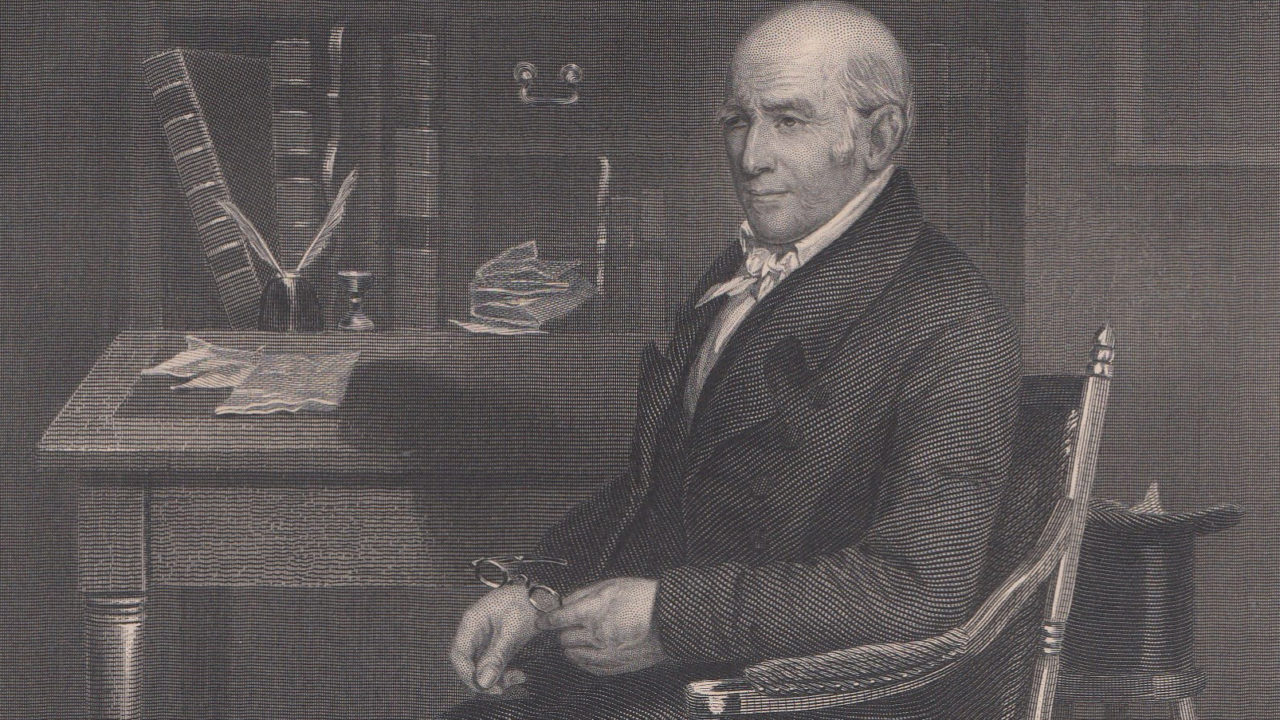 |
| Photo: Girard College |
2021 estimated net worth: $129.3 billion
Stephen Girard, (born May 20, 1750, Bordeaux, France—died December 26, 1831, Philadelphia, Pennsylvania, U.S.), American financier and philanthropist whose purchase of government bonds during the War of 1812 provided economic support for continuation of U.S. military campaigns.
Girard shipped out to sea at the age of 14 and by 1774 was captain of a ship involved in U.S. coastal trade with the West Indies. Stymied by British blockades of U.S. seaports during the Revolutionary War (1775–83), he settled in Philadelphia but resumed maritime trading after the war. He developed a worldwide trading fleet and scrupulously efficient business methods that laid the foundation of his fortune. In 1812 he bought out the first Bank of the United States, after its charter had expired. He renamed it the Bank of Stephen Girard, which became known as the “sheet anchor” of government credit during the War of 1812. Toward the end of the war, when U.S. credit was at its lowest ebb, his subscription for 95 percent of the government war loan issue enabled the United States to carry on the war. Subsequently he was one of Philadelphia’s most noted civic leaders.
Girard bequeathed nearly his entire fortune to social welfare institutions, including an endowment for a Philadelphia college for male orphans, founded as the Stephen Girard College in 1833.
6. John Jacob Astor
2021 estimated net worth: $148.7 billion
Financier John Jacob Astor IV was the great-grandson of John Jacob Astor. He helped build the Waldorf-Astoria hotel and died in the sinking of the RMS Titanic.
Financier, soldier and inventor John Jacob Astor IV built the Astoria section of the Waldorf-Astoria Hotel in 1897. He built several other notable New York City hotels, including the St. Regis, which some have said was his greatest achievement. Astor drowned in the sinking of the RMS Titanic in 1912.
Outside of the family business, Astor had many other interests. He tried his hand at being a writer in 1890s and authored an 1894 science-fiction novel called Journey in Other Worlds. Astor also enjoyed inventing things. He designed a bicycle brake and an improved turbine engine. When the Spanish-American War began in 1898, Astor offered his yacht, the Nourmahal, to the U.S. Navy to help in the war effort. He also served in the U.S. Army during this conflict.
Astor's first marriage to Ava Lowle Willing was reportedly an unhappy one. The couple married in 1891 and had two children: Vincent and Alice. They divorced in 1909. He remarried in 1911 to Madeleine Talmage Force, who was 30 years younger than Astor. The couple went on holiday to Europe for a time and made the fateful decision to return the United States on the maiden voyage of the RMS Titanic in April 1912.
5. Elon Musk
South African entrepreneur Elon Musk is known for founding Tesla Motors and SpaceX, which launched a landmark commercial spacecraft in 2012.
Elon Musk is a South African-born American entrepreneur and businessman who founded X.com in 1999 (which later became PayPal), SpaceX in 2002 and Tesla Motors in 2003. Musk became a multimillionaire in his late 20s when he sold his start-up company, Zip2, to a division of Compaq Computers.
Musk made headlines in May 2012, when SpaceX launched a rocket that would send the first commercial vehicle to the International Space Station. He bolstered his portfolio with the purchase of SolarCity in 2016 and cemented his standing as a leader of industry by taking on an advisory role in the early days of President Donald Trump's administration.
In January 2021, Musk reportedly surpassed Jeff Bezos as the wealthiest man in the world.
The bulk of Musk’s net worth stems from his more recent ventures, notably his electric carmaker Tesla Motors and rocket company SpaceX. Elon Musk’s net worth has skyrocketed over the past year, up from $24.6 billion in April 2020 to $168.9 billion in April 2021.
4. Sam Walton
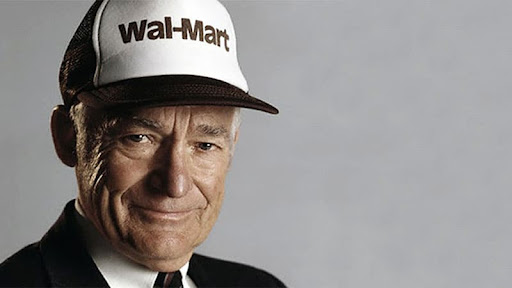 |
| Photo: Getty Images |
2021 estimated net worth: $181.8 billion
Sam Walton, in full Samuel Moore Walton, (born March 29, 1918, Kingfisher, Oklahoma, U.S.—died April 5, 1992, Little Rock, Arkansas), American retail magnate who founded Walmart in 1962 and developed it, by 1990, into the largest retail sales chain in the United States.
Walton graduated from the University of Missouri with a degree in economics (1940) and entered a J.C. Penney Company management training program in Des Moines, Iowa. He opened his own Ben Franklin variety (five-and-dime) store in Newport, Arkansas, in 1945 and relocated the store to Bentonville, Arkansas, five years later. By the early 1960s he and his brother, James, operated a regional chain of Ben Franklin stores, and, when that company’s executives rejected his concept for a new discount store chain to be based in small towns, Walton decided to set up such a chain on his own. He opened the first Walmart store, Wal-Mart Discount City, in Rogers, Arkansas, in 1962, offering a wide variety of merchandise at discount prices in a no-frills setting. (In 2018 the company’s name was changed to Walmart.)
Large American discount store chains typically situated their stores in or near large cities, but Walton was convinced that even small towns could generate enough business to make such stores profitable. To operate in out-of-the-way locations, he situated a regional cluster of stores no farther than one day’s drive from a giant Wal-Mart warehouse that made large-volume purchases and distributed the goods to the stores using its own trucking services. Volume buying and a low-cost delivery system enabled Wal-Mart Stores to offer name-brand goods at discount prices in locations where there was little competition from other retail chains. As a result, the Wal-Mart chain experienced tremendous and sustained growth, with 190 stores by 1977 and 800 stores by 1985.
Walton kept prices and salaries low but nevertheless inspired company loyalty in employees, who retired with comfortable pensions as a result of his profit-sharing plan. He stepped down as chief executive officer in 1988 but remained company chairman. By the time of his death in 1992, his company had established 1,735 Wal-Marts, 212 Sam’s Clubs, and 13 Supercenters with a total of 380,000 employees and annual sales of almost $50 billion. In the ensuing years, Walmart continued to grow, and in the early 21st century it was one of the largest corporations in the world. Walton’s heirs were among the wealthiest individuals in the United States.
3. Jeff Bezos
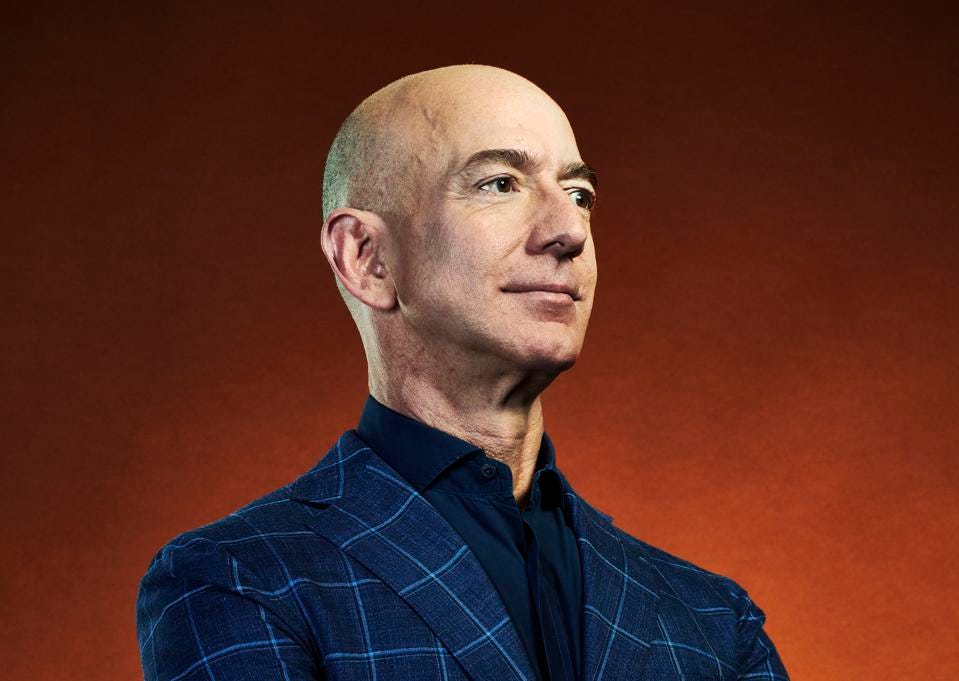 |
| Photo: Forbes |
2021 estimated net worth: $188.5 billion
American entrepreneur Jeff Bezos is the founder and executive chairman of Amazon.com and owner of 'The Washington Post.' His successful business ventures have made him one of the richest people in the world.
Entrepreneur and e-commerce pioneer Jeff Bezos is the founder and CEO of the e-commerce company Amazon, owner of The Washington Post and founder of the space exploration company Blue Origin. His successful business ventures have made him one of the richest people in the world. Born in 1964 in New Mexico, Bezos had an early love of computers and studied computer science and electrical engineering at Princeton University. After graduation, he worked on Wall Street, and in 1990 he became the youngest senior vice president at the investment firm D.E. Shaw. Four years later, Bezos quit his lucrative job to open Amazon.com, an online bookstore that became one of the Internet's biggest success stories. In 2013, Bezos purchased The Washington Post, and in 2017 Amazon acquired Whole Foods. In February 2021, Amazon announced that Bezos will step down as CEO in the third quarter of the year.
2. Cornelius Vanderbilt
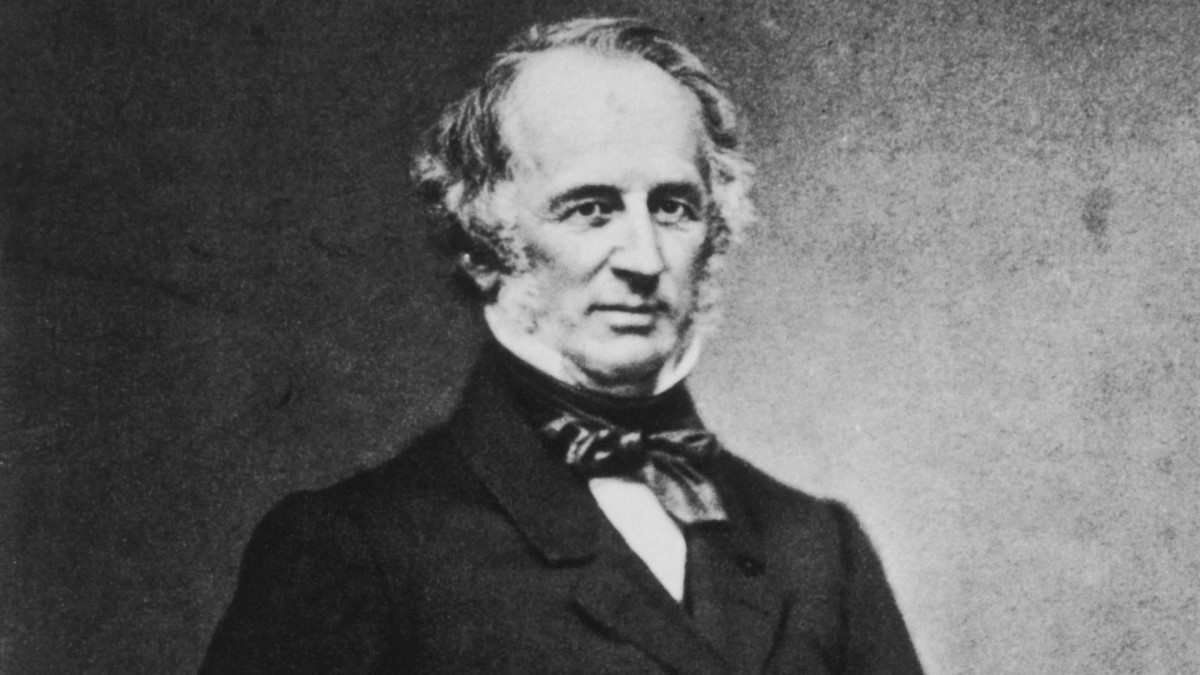 |
| Photo: Getty Images |
2021 estimated net worth: $221.0 billion
Cornelius Vanderbilt, byname Commodore Vanderbilt, (born May 27, 1794, Port Richmond, Staten Island, New York, U.S.—died January 4, 1877, New York, New York), American shipping and railroad magnate who acquired a personal fortune of more than $100 million.
The son of an impoverished farmer and boatman, Vanderbilt quit school at age 11 to work on the waterfront. In 1810 he purchased his first boat with money borrowed from his parents. He used the boat to ferry passengers between Staten Island and New York City. Then, during the War of 1812, he enlarged his operation to a small fleet, with which he supplied government outposts around the city.
Vanderbilt expanded his ferry operation still further following the war, but in 1818 he sold all his boats and went to work for Thomas Gibbons as steamship captain. While in Gibbons’s employ (1818–29), Vanderbilt learned the steamship business and acquired the capital that he would use in 1829 to start his own steamship company.
During the last years of his life, Vanderbilt ordered the construction of Grand Central Depot (the forerunner of Grand Central Terminal) in New York City, a project that gave jobs to thousands who had become unemployed during the Panic of 1873. Although never interested in philanthropy while acquiring the bulk of his huge fortune, later in his life he did give $1 million to Central University in Nashville, Tennessee (later Vanderbilt University). In his will he left $90 million to his son William Henry, $7.5 million to William’s four sons, and—consistent with his lifelong contempt for women—the relatively small remainder to his second wife and his eight daughters. The Vanderbilt family had become one of the wealthiest and most prominent families in the United States.
1. John D. Rockefeller
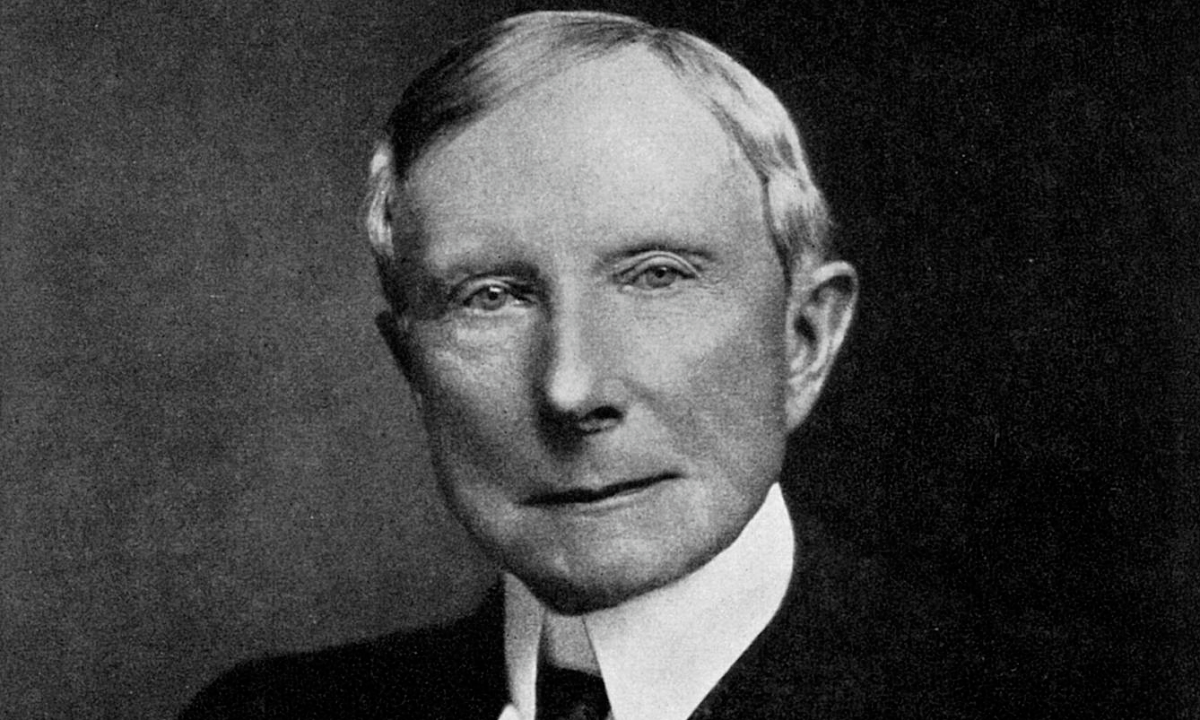 |
| Photo: Getty Images |
2021 estimated net worth: $272.7 billion
John D. Rockefeller, in full John Davison Rockefeller, (born July 8, 1839, Richford, New York, U.S.—died May 23, 1937, Ormond Beach, Florida), American industrialist and philanthropist, founder of the Standard Oil Company, which dominated the oil industry and was the first great U.S. business trust.
Rockefeller was the eldest son and second of six children born to traveling physician and snake-oil salesman William (“Big Bill”) Avery Rockefeller and Eliza Davison Rockefeller. He moved with his family to Moravia, New York, and, in 1851, to Oswego, New York, where he attended Oswego Academy. The family relocated to Strongsville, a town near Cleveland, Ohio, in 1853, and six years later—after attending and later dropping out of Cleveland’s Central High School, taking a single business class at Folsom Mercantile College, and working as a bookkeeper—Rockefeller established his first enterprise, a commission business dealing in hay, grain, meats, and other goods. Sensing the commercial potential of the expanding oil production in western Pennsylvania in the early 1860s, he built his first oil refinery, near Cleveland, in 1863. Within two years it was the largest refinery in the area, and thereafter Rockefeller devoted himself exclusively to the oil business.
A devout Baptist, Rockefeller turned his attention increasingly during the 1890s to charities and benevolence; after 1897 he devoted himself completely to philanthropy. He made possible the founding of the University of Chicago in 1892, and by the time of his death—from a heart attack in 1937, shortly before his 98th birthday—he had given it some $35 million. In association with his son, John D. Rockefeller, Jr., he created major philanthropic institutions, including the Rockefeller Institute for Medical Research (renamed Rockefeller University) in New York City (1901), the General Education Board (1902), and the Rockefeller Foundation (1913). Rockefeller’s benefactions during his lifetime totaled more than $500 million.
 Top 15 Most Famous Persons In The World For 2021/2022 Top 15 Most Famous Persons In The World For 2021/2022 Who are the most famous persons in the world today? Check out the article to know whether your idol is in the list. |
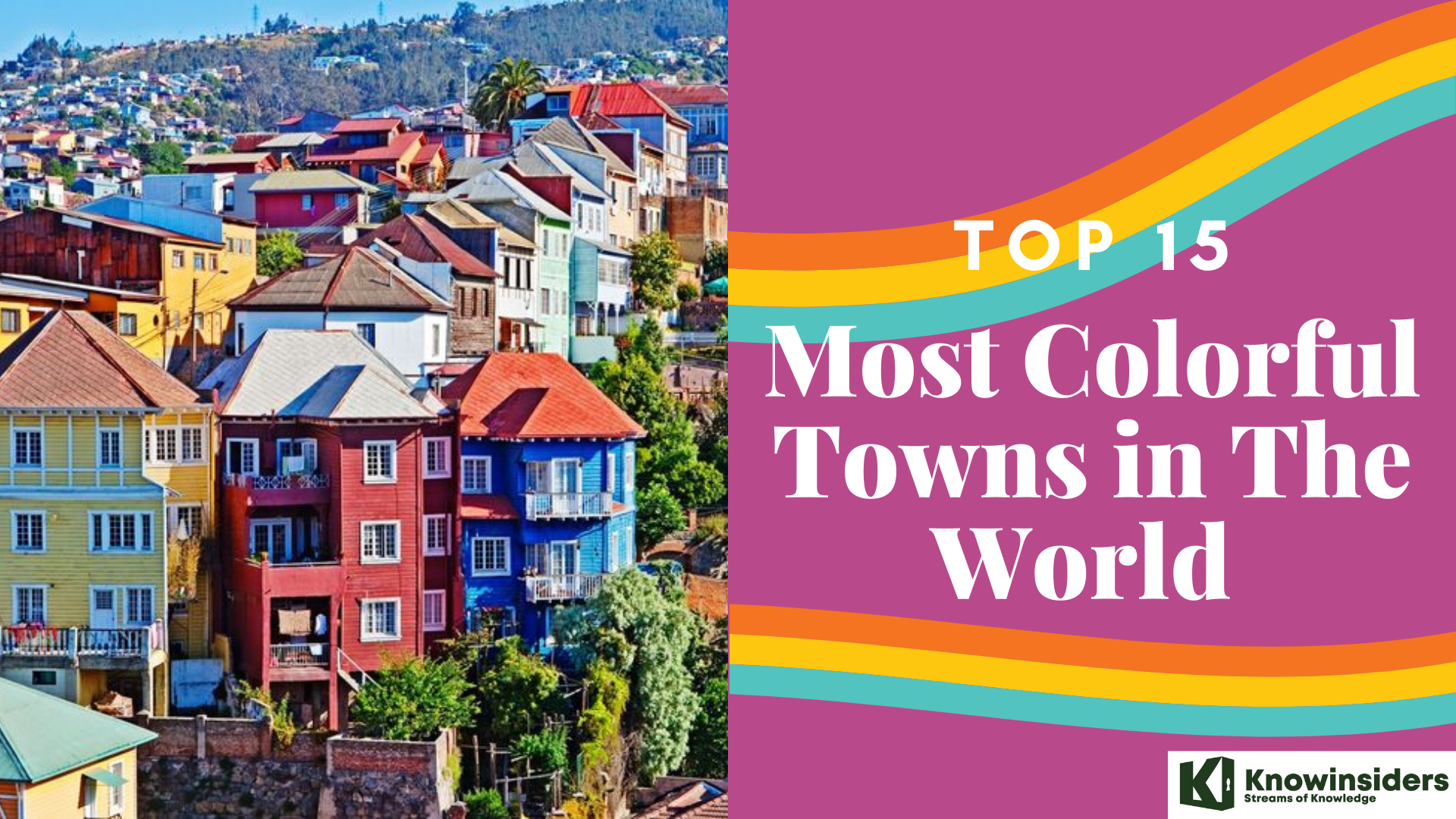 15 Most Colourful Towns In The World 15 Most Colourful Towns In The World Colors can present a lot of things: Fun, joy, emotions, different culture, creativity etc. Keep reading for top 15 most colourful towns in the world. |
 Top 15 Richest Actors & Actresses in The World for 2021/2022 Top 15 Richest Actors & Actresses in The World for 2021/2022 The glamour industry is one of the highest-paying jobs in the world if you are successful. Check out right now the top 15 richest actors ... |
 Top 15 Most Unique American Police Cars Of All Time Top 15 Most Unique American Police Cars Of All Time Take a look at the most iconic US cop cars in the history. Some of them are vintage and have special features. |


